There’s something so magical about gathering a bouquet of peonies, roses, or sunflowers from your garden and creating your own floral arrangement. Once you’ve made that stunning centerpiece, you’ll definitely want to enjoy it for as long as possible. But how exactly do you make cut flowers last and last?
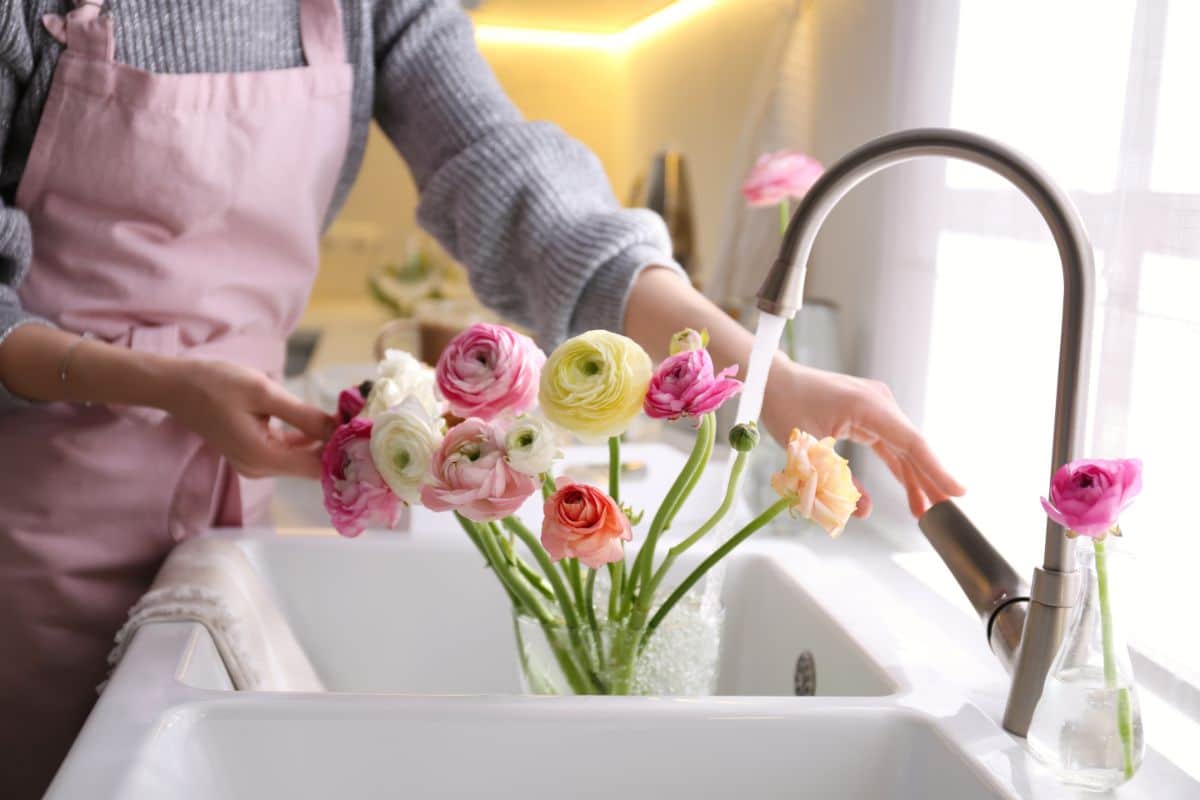
If you’re new to flower arranging, there are certain tips and tricks you can follow to extend the life of cut flowers. Whether those flowers are homegrown or storebought, learn how to make flowers last longer with the 8 simple tips below.
Jump to:
8 tips on how to keep flowers fresh
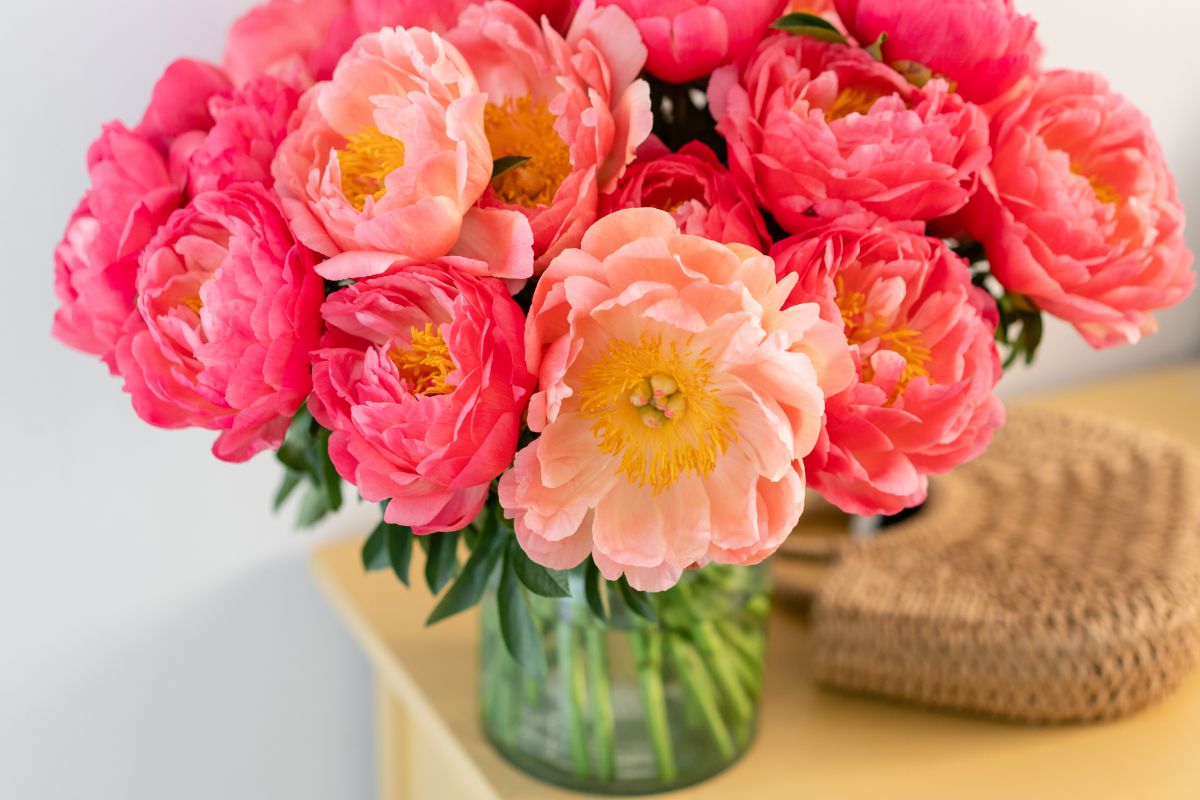
Cut flowers generally last between 5 and 12 days, depending on the type of plant. But if you want to extend the life of your flowers for longer, the tips below can do just that. After all, if you’ve gone through the trouble of growing your own flowers, you’ll want to enjoy those gorgeous blooms for as long as possible!
1. Trim flower stems
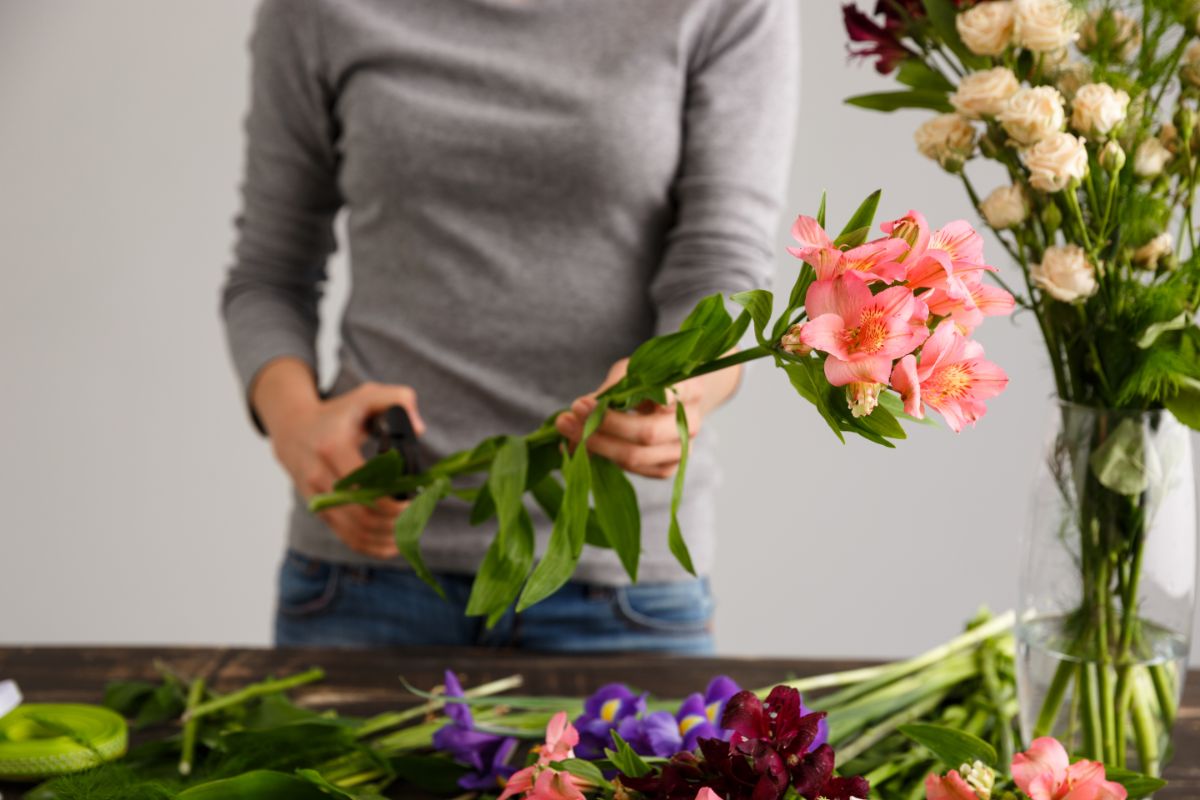
Whether you’re using store-bought flowers or flowers you picked yourself from your garden, the first thing you need to do to create a flower arrangement that lasts is to trim your flower stems. Freshly trimmed stems absorb water easier, which will keep your flowers looking their best for longer.
Use a sharp knife or pair of scissors to make your cuts, and be careful not to accidentally crush or split the flower stems. Additionally, making clean cuts on a slight angle will form a larger surface area on your stems so they can take up water faster. If you just cut your flowers in your garden, you may not need to trim the stems again, but storebought flowers should have at least 1 to 2” of their stems snipped away before adding them to water.
Sometimes flower stems, particularly ones with hollow cores, may get air bubbles in the stems, which can block water flow. To avoid this, try cutting your flower stems underneath your kitchen sink while the water is running.
After the initial trim, it’s a good idea to retrim your flowers every few days, especially when you are refreshing the water in your vase. This will ensure your flowers continue to absorb water correctly.
2. Prune away extra leaves
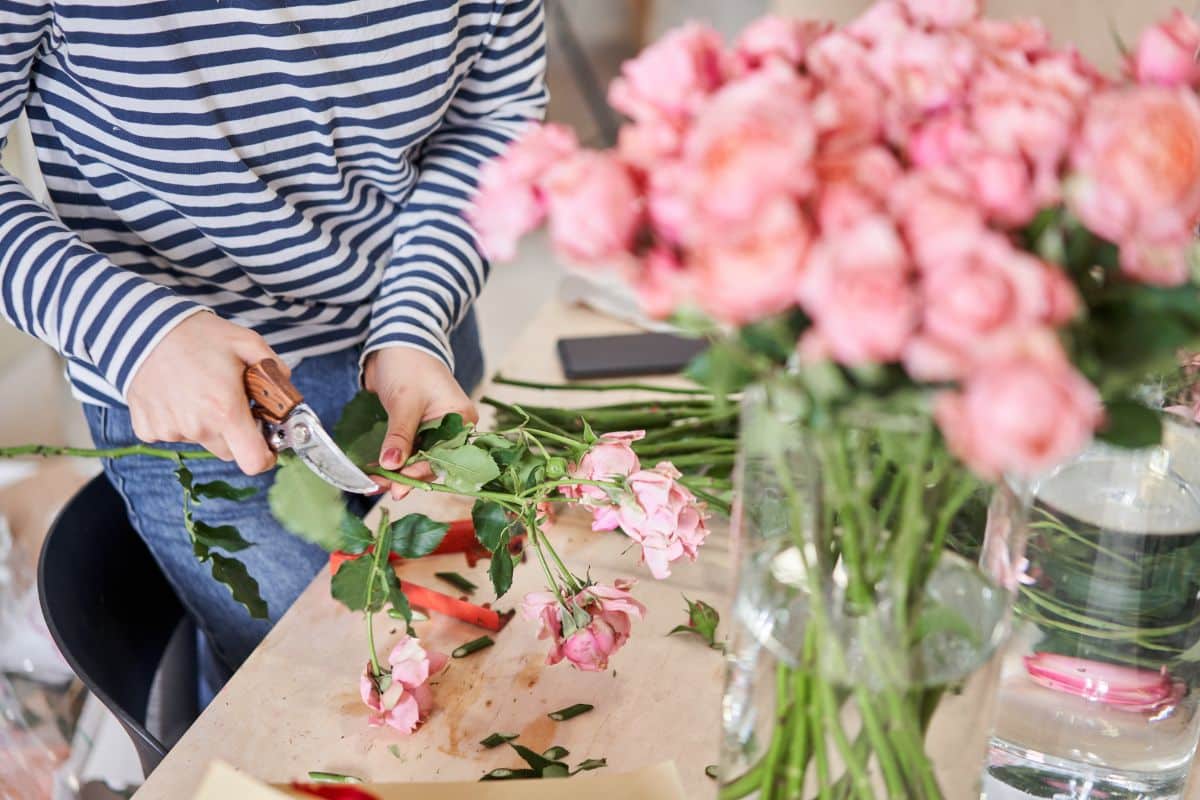
Many flowers often have leaves sprouting from their stems. However, submerged leaves can decompose quickly in flower vases, releasing bacteria into the water that can clog up flower stems and make your flowers break down too fast. To avoid this, snip away any leaves on the lower portions of the flower stems, making sure to remove any foliage that may sit beneath the water line in your vase.
Additionally, some flowers, including roses, have guard petals on the outside of their flower buds, which can prevent the flower from opening fully. Guard petals are usually thicker and larger than the inner petals, and they often are damaged anyway, especially if you purchased store-bought flowers. Gently peeling these petals away can cause your flowers to open more fully and create a more attractive flower arrangement.
3. Clean your vase

Once your bouquet is prepped, it’s time to start arranging your flowers. But first, you’ll need to thoroughly clean out your vase. Dirty vases, after all, can be breeding grounds for bacteria!
If you have a dishwasher, you can simply run your vase through a wash cycle to get it sparkling clean. Or you can scrub out your vase in the sink with hot water and soap. After cleaning, rinse your vase out well to remove any leftover soap residue, and then fill the vase with room temperature water.
4. Locate your flowers in the right spot

With a clean vase on hand, you’re ready to start arranging your flowers. While you can order your flowers any way you’d like, florists often place tape over the top of vases in a grid-like pattern, which can make flower arranging even easier. Alternatively, you can add a flower frog to the bottom of your vase to keep flowers in place.
After arranging your bouquet, move your vase to a table or countertop where you’d like to display your blooms. However, if possible, avoid placing your flowers in direct sunlight or in a hot area since these conditions can cause flowers to break down more quickly. Additionally, drafts and breezes from A/C and heating units can cause flowers to age as well.
If you have pets, place your flowers in an area of your home where your furry friends won’t be able to access them, as pets can cause a lot of damage to bouquets. Additionally, flowers like lilies are highly toxic to cats and should not be kept anywhere where pets can nibble on them.
Finally, avoid keeping fresh flowers near ripe fruit. This is because fruit, like those apples stored in your fruit bowl, can release ethylene gas. This gas is naturally produced as the fruit ripens, and it can dramatically reduce the shelf life of bouquets.
5. Refresh water often
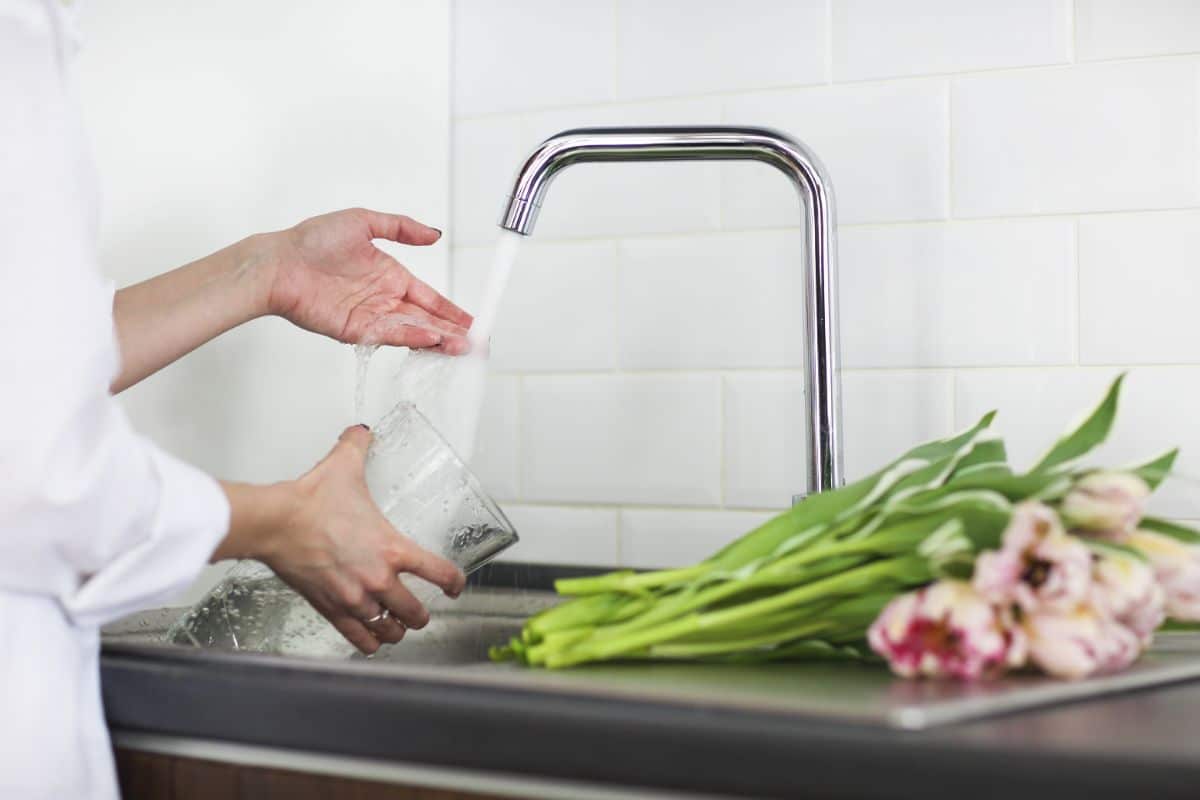
New flowers usually absorb a lot of water during the first day or two, so if you notice that the waterline in your vase has fallen, it’s a good time to add a bit more water to your flower arrangement. After that, refresh the water in your vase every 2 to 3 days to extend the life of your flowers. If the water ever gets cloudy, dump it out, give your vase a good wash, rinse off the bottom of your flower stems, and then place your flowers back in the vase.
Since you’re already cleaning out your vase, this is a great time to trim off the bottoms of your flower stems to rejuvenate them and encourage them to absorb more water.
6. Mix in a flower food
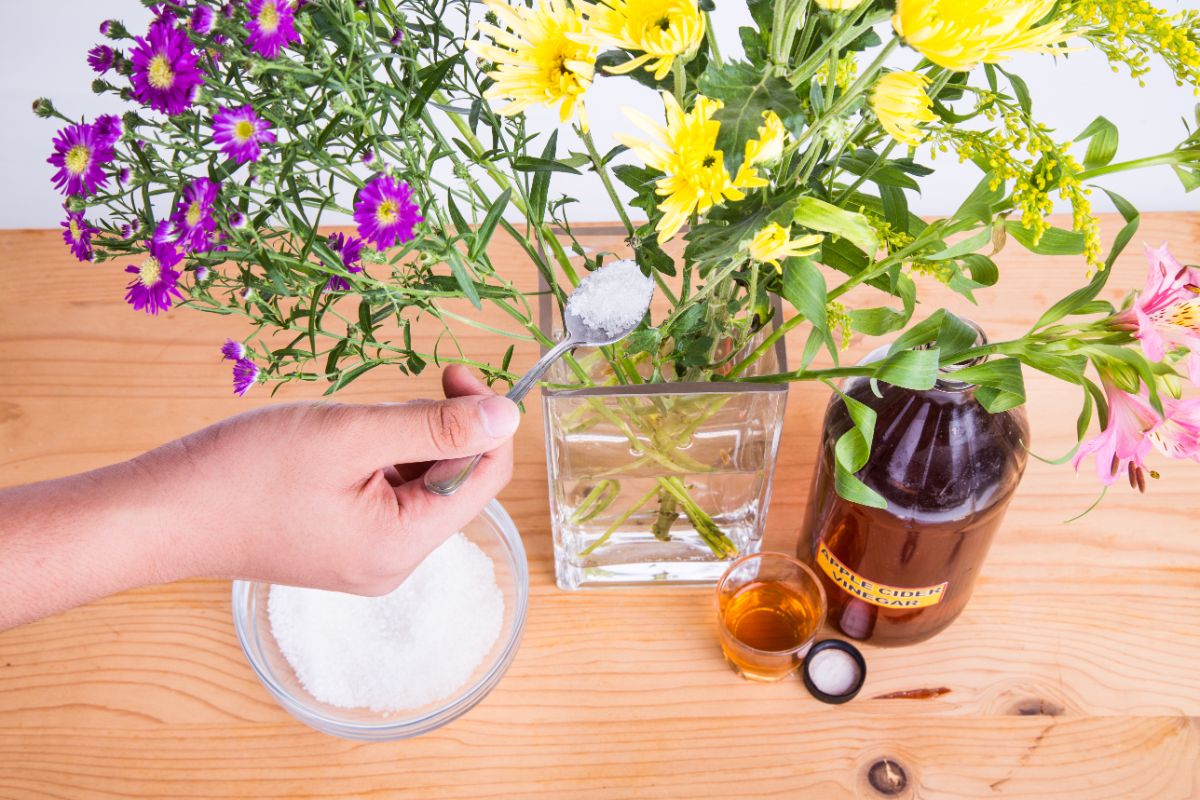
While flower food isn’t strictly necessary, it can extend the life of your bouquet. Some flower food additives can also limit bacterial growth in flower vases, which will increase the longevity of your flowers and ward against slimy stems and other unpleasantness.
While you can purchase “flower food” for cut flowers online, many of these products are not natural, and they may contain ingredients that you don’t want in your home. Instead, there are other DIY solutions that you can add to your flower’s water to keep them looking fresh for longer.
There is some evidence that adding a bit of clear, lemon-lime soda, like Sprite, to flower water can keep bouquets fresh for longer. The theory behind this is that the sugar in the soda helps feed the flowers, just like plant food would. If you’d like to try this out, add 1 part soda to 3 parts water and use this to refill your vase every time you refresh your flowers’ water.
Alternatively, you can use the classic method of blending 2 tablespoons of apple cider vinegar and 2 tablespoons of sugar into the water in your flower vase. In this recipe, the sugar helps to feed the flowers, while the vinegar can act as an antifungal and keep bacteria from growing in the vase.
7. Use your fridge
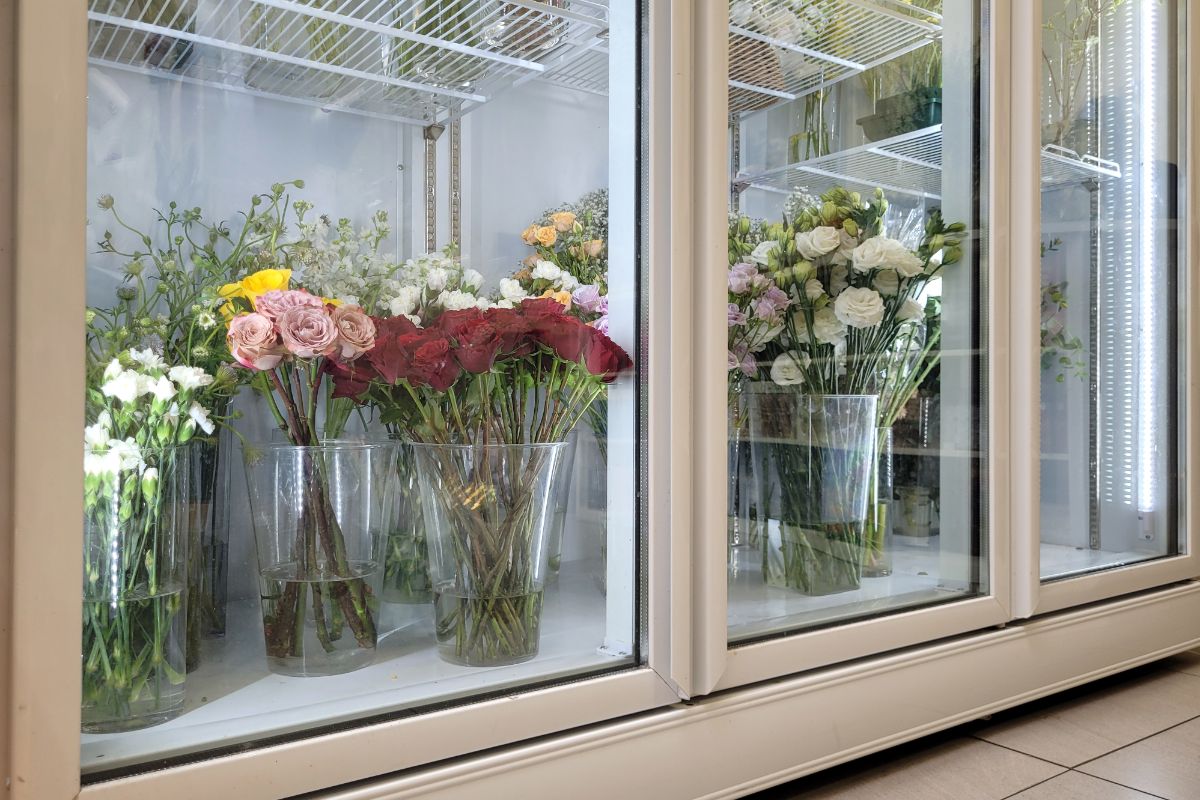
Cut flowers last longer in cooler temperatures, so it makes sense that they can benefit from being kept in the fridge! While you definitely shouldn’t keep your flowers in the fridge all the time since you’ll want to enjoy them, placing flowers in your refrigerator overnight can slow evaporation rates and keep your flowers looking crisp and colorful for longer. When morning comes, just remove your flowers from the fridge and return them to wherever you had them on display the day before.
If you’ve ever visited a professional florist’s shop, you’ve probably seen them use this technique as well. Florist refrigerators (or cases) usually stay around 34 and 36°F, and they have humidity levels of between 90 and 95%. While you don’t need to create these exact conditions in order to store your flowers in your refrigerator, keeping your flowers cool is a simple way to extend the life of your bouquet.
8. Tidy up your arrangement
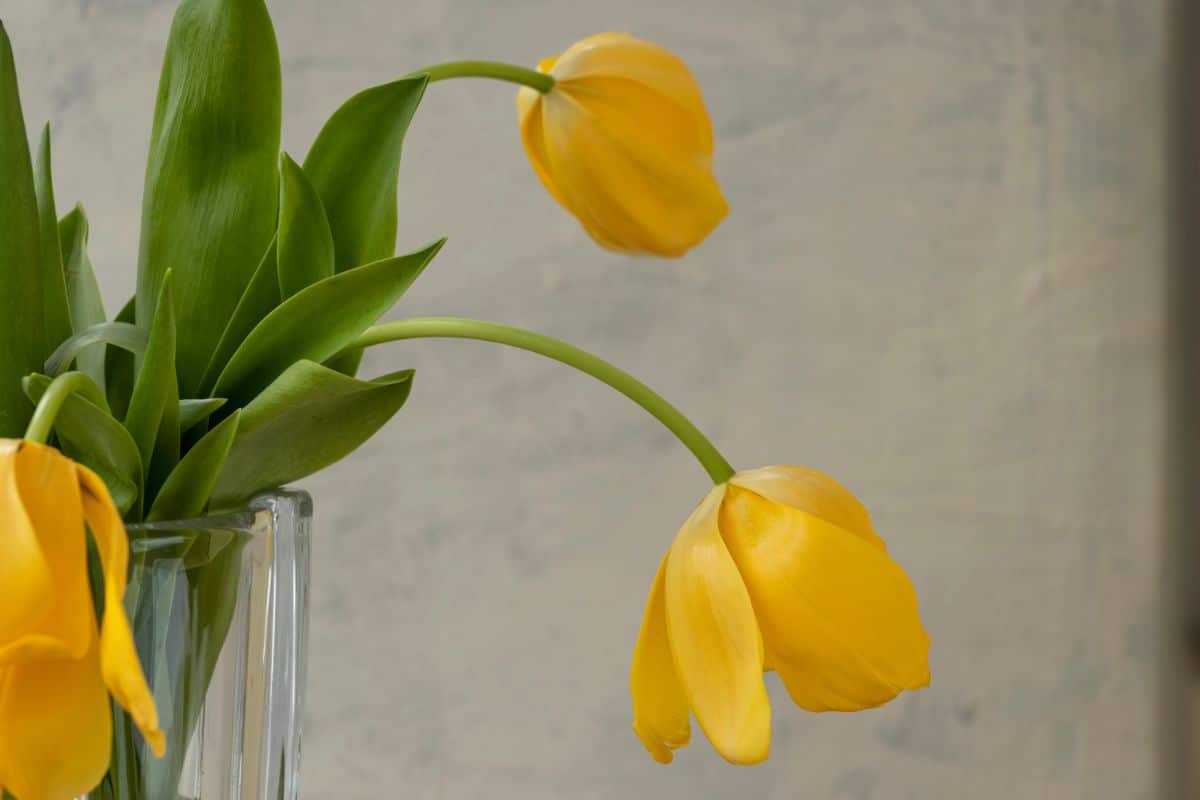
Despite our best efforts, flowers will eventually begin to fade, but you can keep your bouquet looking nice for a bit longer by removing individual flowers as they begin to wilt. Gently pluck away any damaged or loose petals and pull out any stems that begin to slump or break. While your bouquet may get a bit smaller, editing out damaged blooms will allow you to enjoy the remainder of your floral arrangement for a few more days.
What to do with old flower bouquets?
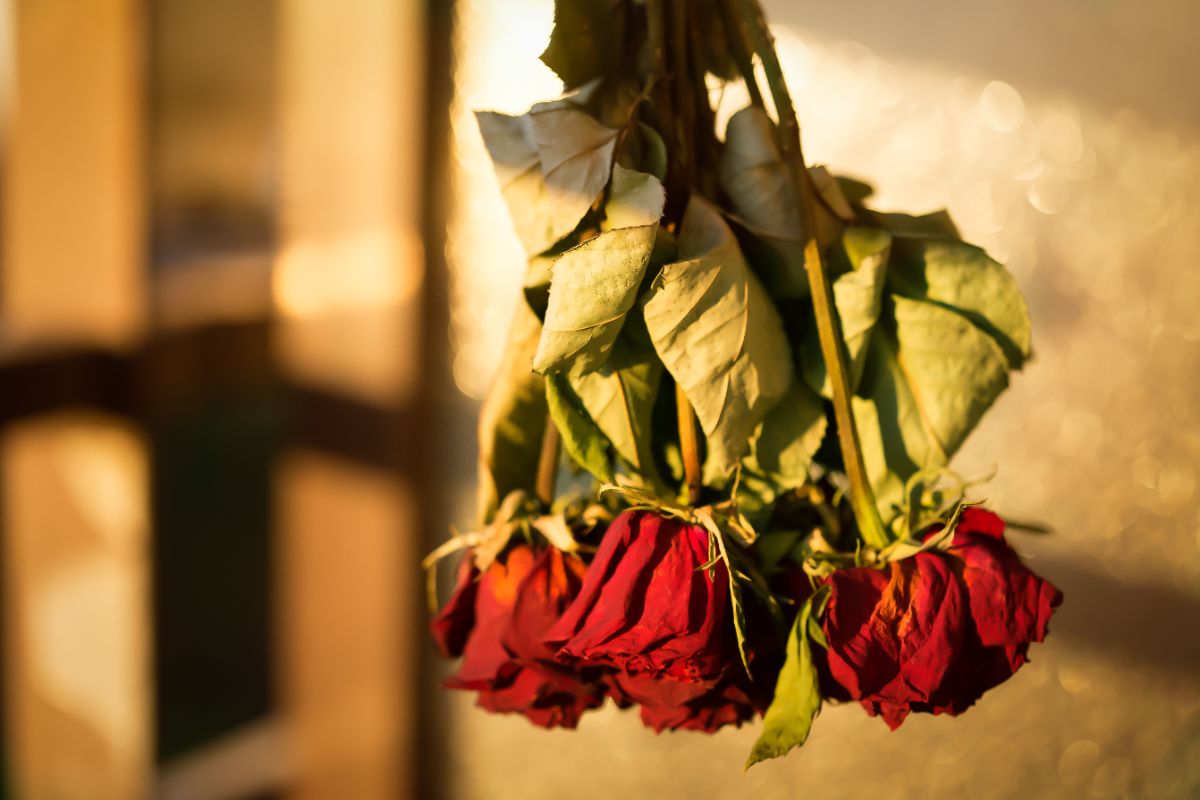
When flowers begin to fade in floral arrangements, it’s time to harvest a new bouquet from your garden! But what do you do with those old flowers? Rather than toss them in the trash, here are a few ways to continue to enjoy old-cut flowers.
- Dry them.
Not all flowers dry well, but plants with sturdy stems and robust petals can dry beautifully, even after you’ve kept them in a vase for a few days. Generally speaking, the best way to dry old flower arrangements is to gather your blooms, tie the stems with a string and then hang them up to dry in a cool, dry place that’s out of direct light.
This technique works best on plants with thick, stiff stems and is less likely to work on plants with fleshy stems, like tulips. However, hydrangeas, roses, and other garden favorites can usually be preserved beautifully by hanging them up to dry.
- Press them.
Smaller flowers with simple blooms, like violets and daisies, can be preserved by pressing, which will allow you to keep flowers for many months or even years! Depending on how many flowers you have, you can press them in an old, heavy book, or you can invest in a professional flower press. You can also find microwave flower presses that allow you to press flowers much quicker, which can help preserve flower colors better.
- Compost them!
When flowers are well and truly past their prime, don’t throw them in the trash… compost them instead! Composting breaks down organic matter into nutrient-rich compost, which can be used in your garden to boost the health of your growing plants. Repurposing bouquets in this way also cuts down on the waste you produce and helps you create a greener home.
One caveat of composting flowers is that most store-bought flowers are not grown organically. So, if you’re keeping an organic garden, you may not want to use these store-bought flowers in compost that’s going to be used on your veggie beds. Any flowers you grow at home are fair game for composting, though!
Frequently asked questions
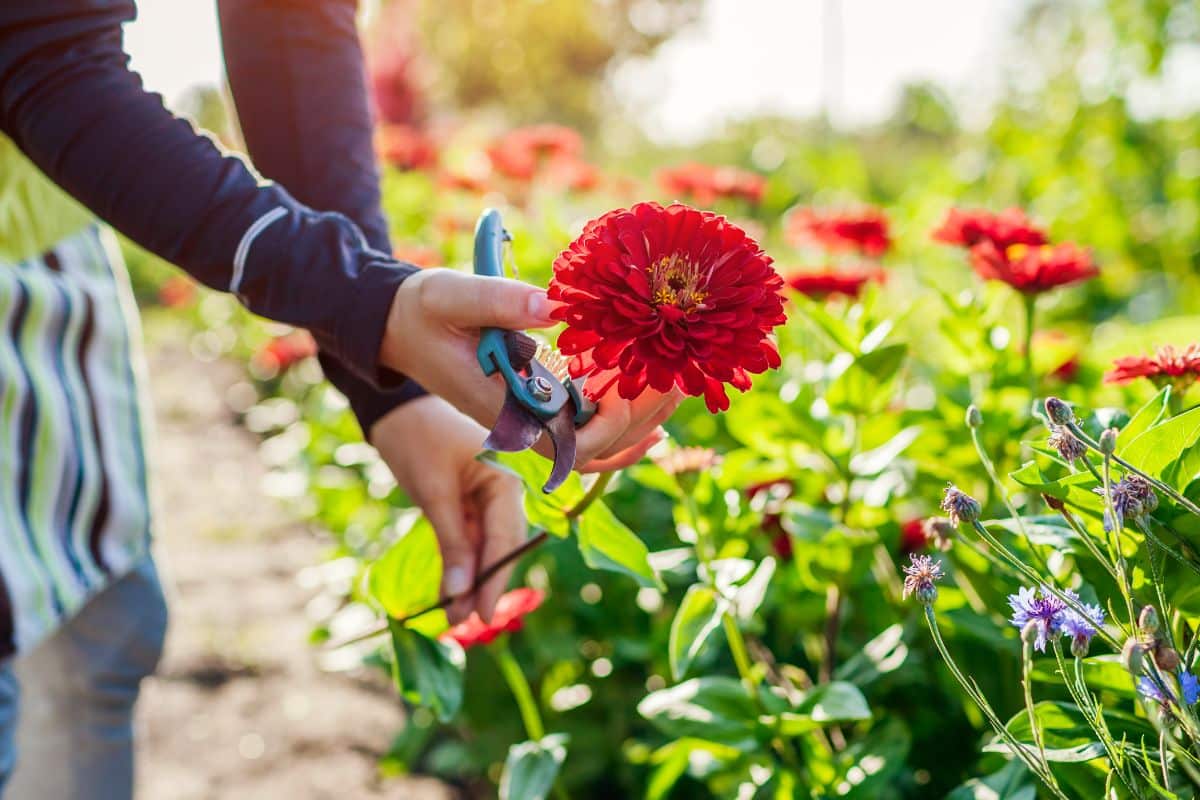
There is an old tradition of using crushed aspirin to extend the longevity of floral arrangements. However, there is no evidence that this technique actually works. Additionally, aspirin is toxic to cats, and it should not be used in flower displays that pets have access to.
Bleach can prevent bacteria from growing in flower water, and it can keep your flowers fresh for longer too! To use bleach for fresh flowers, mix about ¼ teaspoon of bleach into a quart of flower water. You can also use diluted bleach to clean out your vase before adding flowers.
Vodka is often recommended as a “folk” remedy to keep cut flowers fresh, but it’s unclear whether or not this method works. Currently, there is no scientific evidence to back it up, but that doesn’t mean it’s not worth a try!
Flowers and flower food can react to some metals and may cause flowers to degrade faster. For this reason, metal vases are usually not the best choice for cut flower arrangements.
Sprite and other sugary sodas can provide extra sugar to cut flowers and keep them looking fresh longer. Any soda can work for this; however, clear sodas, like Sprite, are usually recommended as they won’t stand out when used in clear flower vases.
Baking soda may keep flowers fresh, but there currently isn’t a lot of scientific evidence to prove it works for flower preservation. If you’d like to give it a try, add about 1 teaspoon of baking soda to your flower vase and mix it in well.
Summary
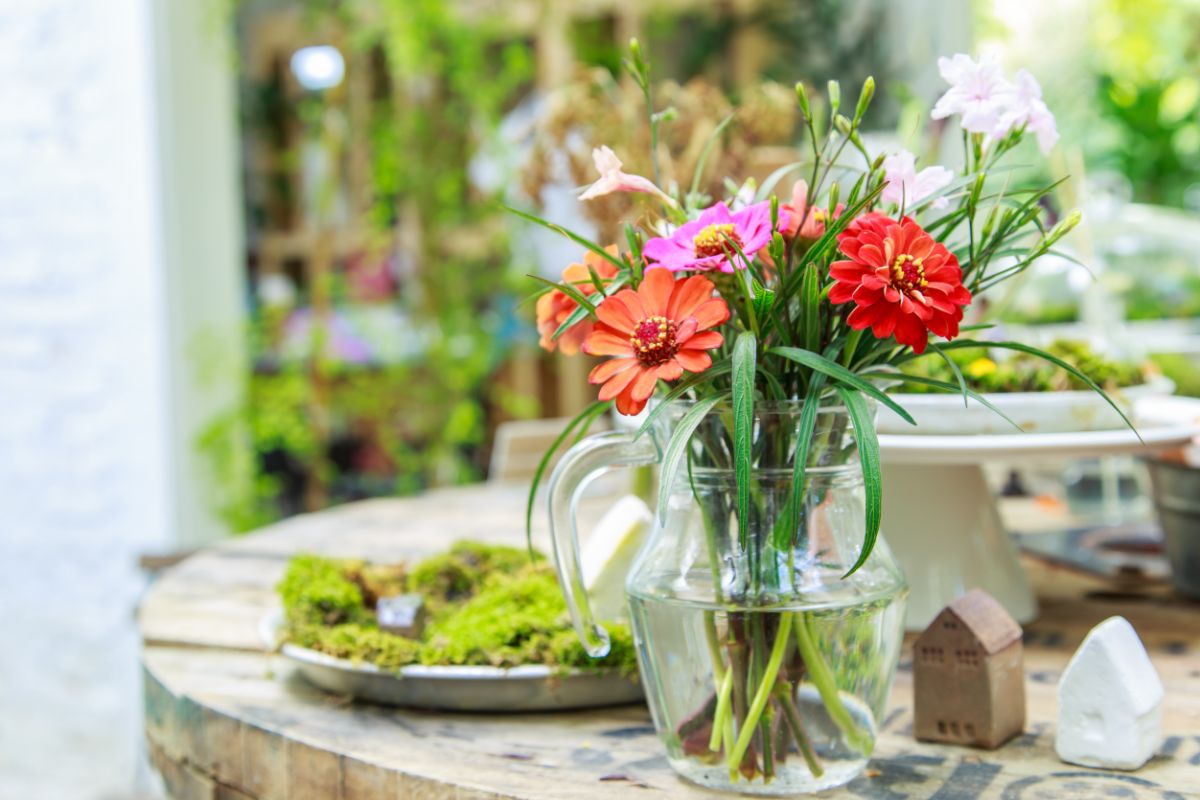
Cut flowers are always a joy to behold, and they can bring color and excitement to dining room tables, picnics, and so much more. But after you’ve made a flower arrangement, you’ll want to keep your flowers looking their best for as long as possible. So, try out some or all of the tips we’ve covered today to preserve your flower garden’s bounty for days or even weeks!
If you’d like to learn more about growing cut flowers in your garden, check out our guide on flower growing here. You may also want to peruse some of our specific grow guides for particular cut flower plants, such as hollyhocks and hydrangeas, to get inspiration for your own cut flower garden.


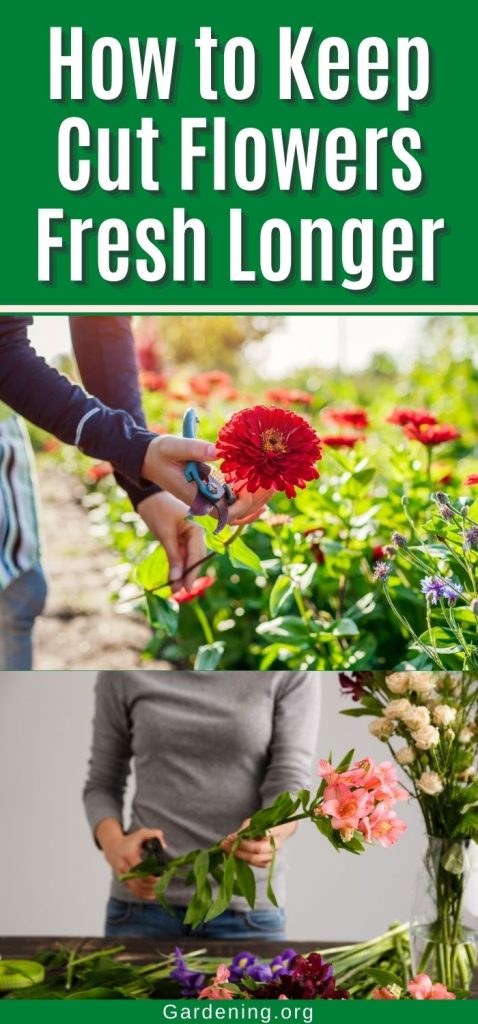
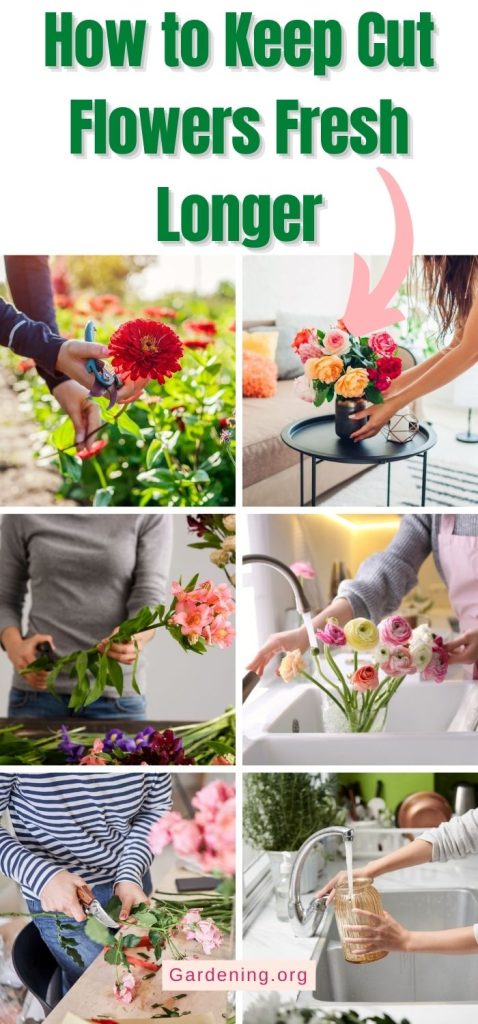





Leave a Reply